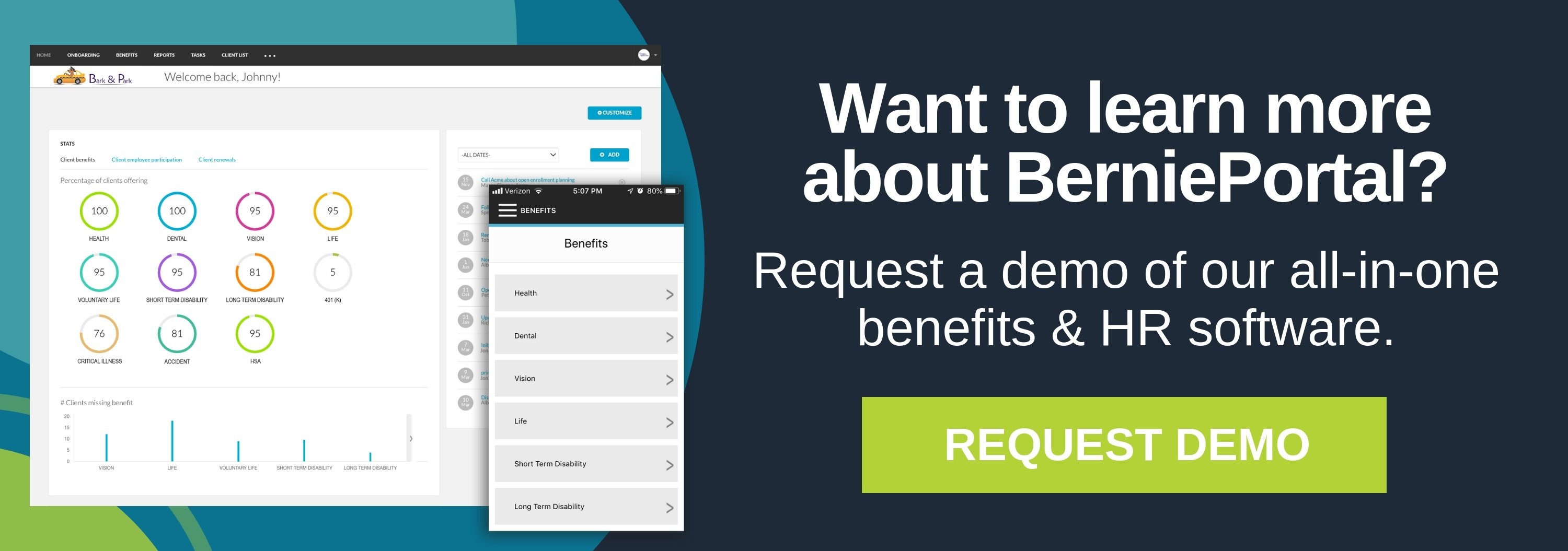
Written by
Emily Kubis
Emily writes about benefits, technology, the healthcare industry and more.
IRS expands list of preventive care services

Notice 2019-45: Here's what you need to know:
This summer, the IRS expanded the list of preventive care benefits that can be covered by a high deductible plan before the deductible is met.
Why does this matter? In a high deductible plan, only preventive care is covered before the consumer meets their deductible. The longer list of accepted services means more care will be covered at no or low-cost to employees covered under your benefits plan.
The newly-covered services only apply when prescribed to treat a person diagnosed with a specific chronic condition, and when prescribed for the purpose of preventing exacerbation of that chronic condition or the development of a secondary condition.
Preventative care guidelines to know:
The IRS has also released the HSA contribution limits for 2020 – check those out here, and be sure to share with employees. Employees may want to increase their contributions at the end of the year to maximize their accounts in 2020.
Also, we know benefits are highly regulated and complex – which is why most employers work with a trusted advisor. These advisors employ a variety of plan designs and funding options to ensure employers are getting the most value for their benefits dollars, including HSA-based plans.
This complexity has traditionally been difficult to manage outside of paper-based enrollments, but employers have more software solutions to handle these responsibilities than ever before.
Using an HR administration software supported by a benefits advisor ensures that the system can manage the exact plan design and funding strategy your organization uses.
And since benefits are generally an organization's second-largest business expense, aside from payroll, it's important to make sure your system can properly manage the large investment you're making in employee benefits.
List of preventative care benefits
The following services are considered preventive care. Note that covered services may vary based on your specific health plan.
Preventive care benefits for adults
- Abdominal aortic aneurysm one-time screening for men of specified ages who have ever smoked
- Alcohol misuse screening and counseling
- Aspirin use to prevent cardiovascular disease and colorectal cancer for adults 50 to 59 years with a high cardiovascular risk
- Blood pressure screening
- Cholesterol screening for adults of certain ages or at higher risk
- Colorectal cancer screening for adults 50 to 75
- Depression screening
- Diabetes (Type 2) screening for adults 40 to 70 years who are overweight or obese
- Diet counseling for adults at higher risk for chronic disease
- Falls prevention (with exercise or physical therapy and vitamin D use) for adults 65 years and over, living in a community setting
- Hepatitis B screening for people at high risk
- Hepatitis C screening for adults at increased risk, and one time for everyone born 1945–1965
- HIV screening for everyone ages 15 to 65, and other ages at increased risk
- Immunization vaccines for adults — doses, recommended ages, and recommended populations vary
- Lung cancer screening for adults 55-80 at high risk for lung cancer because they’re heavy smokers or have quit in the past 15 years
- Obesity screening and counseling
- Sexually transmitted infection (STI) prevention counseling for adults at higher risk
- Statin preventive medication for adults 40 to 75 at high risk
- Syphilis screening for adults at higher risk
- Tobacco use screening for all adults and cessation interventions for tobacco users
- Tuberculosis screening for certain adults without symptoms at high risk
Preventative care services for pregnant women or women who may become pregnant
- Anemia screening on a routine basis
- Breastfeeding comprehensive support and counseling from trained providers, and access to breastfeeding supplies, for pregnant and nursing women
- Contraception: Food and Drug Administration-approved contraceptive methods, sterilization procedures, and patient education and counseling, as prescribed by a health care provider for women with reproductive capacity (not including abortifacient drugs). This does not apply to health plans sponsored by certain exempt “religious employers.”
- Folic acid supplements for women who may become pregnant
- Gestational diabetes screening for women 24 to 28 weeks pregnant and those at high risk of developing gestational diabetes
- Gonorrhea screening for all women at higher risk
- Hepatitis B screening for pregnant women at their first prenatal visit
- Preeclampsia prevention and screening for pregnant women with high blood pressure
- Rh incompatibility screening for all pregnant women and follow-up testing for women at higher risk
- Syphilis screening
- Expanded tobacco intervention and counseling for pregnant tobacco users
- Urinary tract or other infection screening
Other covered preventive services for women
- Breast cancer genetic test counseling (BRCA) for women at higher risk
- Breast cancer mammography screenings every 1 to 2 years for women over 40
- Breast cancer chemoprevention counseling for women at higher risk
- Cervical cancer screening
- Pap test (also called a Pap smear) every 3 years for women 21 to 65
- Human Papillomavirus (HPV) DNA test with the combination of a Pap smear every 5 years for women 30 to 65 who don’t want a Pap smear every 3 years
- Chlamydia infection screening for younger women and other women at higher risk
- Diabetes screening for women with a history of gestational diabetes who aren’t currently pregnant and who haven’t been diagnosed with type 2 diabetes before
- Domestic and interpersonal violence screening and counseling for all women
- Gonorrhea screening for all women at higher risk
- HIV screening and counseling for sexually active women
- Osteoporosis screening for women over age 60 depending on risk factors
- Rh incompatibility screening follow-up testing for women at higher risk
- Sexually transmitted infections counseling for sexually active women
- Syphilis screening for women at increased risk
- Tobacco use screening and interventions
- Urinary incontinence screening for women yearly
- Well-woman visits to get recommended services for women under 65
Coverage for children’s preventive health services
- Alcohol, tobacco, and drug use assessments for adolescents
- Autism screening for children at 18 and 24 months
- Behavioral assessments for children ages: 0 to 11 months, 1 to 4 years, 5 to 10 years, 11 to 14 years, 15 to 17 years
- Bilirubin concentration screening for newborns
- Blood pressure screening for children ages: 0 to 11 months, 1 to 4 years , 5 to 10 years, 11 to 14 years, 15 to 17 years
- Blood screening for newborns
- Cervical dysplasia screening for sexually active females
- Depression screening for adolescents beginning routinely at age 12
- Developmental screening for children under age 3
- Dyslipidemia screening for all children once between 9 and 11 years and once between 17 and 21 years, and for children at higher risk of lipid disorders ages: 1 to 4 years, 5 to 10 years, 11 to 14 years, 15 to 17 years
- Fluoride chemoprevention supplements for children without fluoride in their water source
- Fluoride varnish for all infants and children as soon as teeth are present
- Gonorrhea preventive medication for the eyes of all newborns
- Hearing screening for all newborns; and for children once between 11 and 14 years, once between 15 and 17 years, and once between 18 and 21 years
- Height, weight and body mass index (BMI) measurements for children ages: 0 to 11 months, 1 to 4 years, 5 to 10 years, 11 to 14 years, 15 to 17 years
- Hematocrit or hemoglobin screening for all children
- Hemoglobinopathies or sickle cell screening for newborns
- Hepatitis B screening for adolescents at high risk
- HIV screening for adolescents at higher risk
- Hypothyroidism screening for newborns
- Immunization vaccines for children from birth to age 18
- Lead screening for children at risk of exposure
- Maternal depression screening for mothers of infants at 1, 2, 4, and 6-month visits
- Medical history for all children throughout development ages: 0 to 11 months, 1 to 4 years, 5 to 10 years, 11 to 14 years, 15 to 17 years
- Obesity screening and counseling
- Oral health risk assessment for young children ages: 0 to 11 months, 1 to 4 years, 5 to 10 years
- Phenylketonuria (PKU) screening for newborns
- Sexually transmitted infection (STI) prevention counseling and screening for adolescents at higher risk
- Tuberculin testing for children at higher risk of tuberculosis ages: 0 to 11 months, 1 to 4 years, 5 to 10 years, 11 to 14 years, 15 to 17 years
- Vision screening for all children

Written by
Emily Kubis
Emily writes about benefits, technology, the healthcare industry and more.
Related Posts
We just wrapped up another phenomenal Weekdays with Bernie (WWB) Conference!
Employees are the heart and soul of an organization, and valuing their opinions can have...
HR parties of one already have an abundance of tasks to keep up with. From hiring to...
The talent search is no longer a skirmish or a battle. It’s a WAR! As a strategic HR...







Submit a Comment